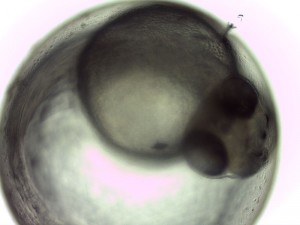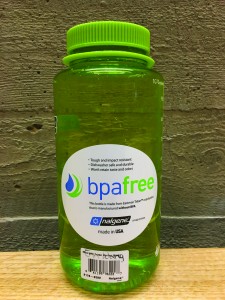In the early 1950s, manufacturers began to use the compound bisphenol A—more colloquially known as BPA—as a strengthening agent in commercial plastics. It wasn’t until forty years later that researchers began to suspect that synthetic chemicals like BPA could disrupt the endocrine system, a collection of glands that secrete hormone signals. Further research eventually shed light on BPA’s harmful reproductive, developmental, and carcinogenic effects. Retailers began to remove BPA from consumer products, and policy changes restricting BPA use ensued.
Now, even plastics not containing BPA are coming under fire: a recent UCLA study published in Endocrinology suggests that BPA-free alternatives are not safer than products containing BPA. The findings may revamp how consumers use plastic food containers or even spur greater commercial and policy changes.

Since the removal of BPA from commercial products, bisphenol S (BPS) has acted as a substitute. It was thought to be more heat-stable and less disruptive to the endocrine system, but research done in Nancy Wayne’s lab at UCLA shows a striking similarity between the effects of BPS and those of BPA. Her lab compared the effects of both chemicals on the zebrafish reproductive neuroendocrine system, which regulates cell development in the regions of the brain controlling reproduction. Zebrafish are a popular model for studying embryonic development because their embryos are transparent, facilitating microscopic visualization. The researchers monitored the developmental changes in embryonic neurons in response to BPA or BPS, finding that both produced similarly detrimental effects.
The researchers also looked at how BPS and BPA affected key endocrine pathways. For example, the study found a receptor to estrogen (a female sex hormone) whose gene expression was increased in the presence of BPA and BPS. Overstimulation of this receptor, and other disruptions of the estrogen pathway, are linked to disorders like precocious puberty—puberty at a premature age—in human females. The study also found that BPA and BPS disrupt pathways involving thyroid hormone receptors, which regulate metabolism, and aromatase, an enzyme that helps produce estrogen.
Wayne herself is wary of these synthetic chemicals. “The day our postdoc showed me the data, I went home and got rid of all the plastic food containers in my house. I probably dumped hundreds of dollars’ worth of food, and I bought glass and ceramic containers instead,” Wayne said. She notes that not everyone has the disposable income to make that more expensive choice—instead, she encourages consumers to demand that manufacturers produce more stable plastic products that release less endocrine disruptors.

“This is an important message to get out: BPA-free is a marketing scheme, or scam. Industries are swapping one endocrine-disrupting chemical for another, and they’re calling it BPA-free because BPA has gotten a lot of media attention,” Wayne said.
The major obstacle to Wayne’s research was not scientific, but financial. She contacted the National Institute of Environmental Health Sciences multiple times, but they had little interest in BPA or BPS research. UCLA continued to support Wayne’s research, and her publication in Endocrinology was financed with money from the Chinese government, since the lead researcher of the study was Wenhui Qiu, a visiting graduate student from Shanghai University.
Yale researcher John Elsworth, who also studies the effects of endocrine disruptors, believes that Wayne’s research adds to a growing body of literature on BPS. According to him, one merit of the study was that it tested a wide range of BPS exposure levels. “Responses to low doses cannot be reliably predicted from changes observed at higher doses,” said Elsworth. He also praised the study for pinpointing the biochemical pathways affected by BPS by using drugs to reverse the observed changes in these genes and proteins. However, he feels that more research needs to be done: “Because of species differences in biochemistry, physiology, endocrinology and regulation of developmental processes, controlled studies in nonhuman primates would provide the most accurate indication of the impact of BPA and BPS on humans,” said Elsworth.
Wayne agrees about the need to go further, saying she would like to see future research, possibly within her own lab, exploring the impact of lifelong exposure to low-level endocrine-disrupting chemicals. Her current research focuses on the reproductive system, but endocrine disrupters may also be involved in cancer, obesity, and other diseases. Moreover, BPA and BPS are just the beginning; we are exposed to many different types of endocrine-disrupting chemicals on a daily basis.
“We already know that we’re poisoning ourselves. But what is it that we can eliminate to help decrease the risk?” said Wayne.
